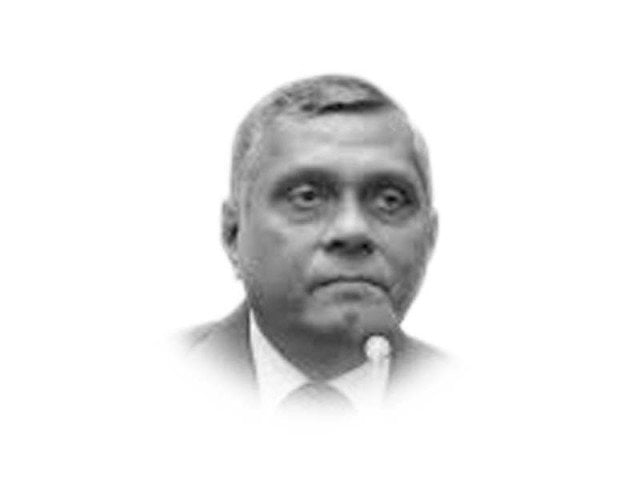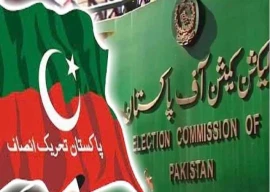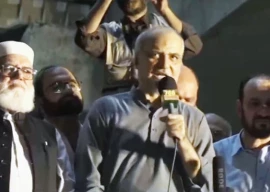
Sindh’s predicament is reaching its logical conclusion because of a surge in polarisation on ethnic grounds. Pakistan Peoples Party (PPP), which primarily represents Sindhi speaking population of rural Sindh, is making concerted efforts to complete its control over urban areas of Sindh, mainly Karachi. The issue that triggered conflict between PPP and its opponents in urban Sindh is the recent passage of a local government amendment bill by the provincial assembly. It reminds one of the passing of the language bill in July 1972 by the PPP dominated Sindh assembly, which led to large-scale ethnic violence between Sindhi and Urdu-speaking communities.
Muttahida Qaumi Movement (MQM) and Pak Sarzamin Party (PSP) claim to represent the Urduspeaking population of urban Sindh. Both parties expressed anger over the PPP government’s manner of seeking control of Pakistan’s megacity, Karachi, by drastically limiting the powers of local government and transferring these to the provincial government, which primarily represents rural Sindh. The anger and resentment of MQM against what they call ‘racist’ and ‘biased’ policies of Sindh government is reflected in statements of the former mayor of Karachi Wasim Akhtar. He has warned that if the PPP doesn’t reverse its anti-Karachi and anti-Urdu speakers policies then its members and officials will not be allowed to sit in the Sindh Secretariat. Despite being rivals, both MQM and PSP vehemently oppose the Sindh government on what they term a policy of ‘Sindhiisation’ of Karachi by controlling the resources and institutions of the city. Taking advantage of its majority in the Sindh Assembly, in the last 13 years of its rule, PPP has expanded the agenda to inundate Karachi and other urban areas of Sindh with its people at the expense of the Urdu-speaking community. The PPP alleges that their people have been marginalised, discriminated against, and persecuted.
The ground realities in Sindh amidst sharp polarisation between Sindhi speaking PPP and those representing Mohajirs of Sindh must be clearly understood because it may trigger another cycle of ethnic conflict in the province, which would be devastating for Pakistan. It is not only MQM and PPP that are at loggerheads over controlling urban Sindh, but other political parties like PTI, PML-N, and Jamaat-i-Islami are also highly critical of the way the PPP-led Sindh government has tried to impose its will over Karachi. In the past, PPP has allegedly controlled governing bodies and filled posts with their supporters that largely represent rural Sindh. It is alleged that large-scale corruption and nepotism in provincial institutions further deprive the urban areas of their legitimate rights. The demographic transformation of Karachi during the 13 years of PPP rule reflects its tilt in favour of Sindhi speaking population. The rise of confidence and authority that is reflected in the Sindhi-speaking population of Karachi and other urban areas of Sindh like Hyderabad and Sukkur is because of their control over police and bureaucracy. Consequently, resentment in the Urdu-speaking community, which traditionally used to have a majority and control over urban areas, feels resentful, marginalized and discriminated against.
Critics argue that ‘Sindhiisation’ of Karachi is not a myth but a reality. At stake is the survival of the Urduspeaking population of Sindh which has been, since 1972, at the receiving end of a “systematic policy of discrimination” during several Sindhi-dominated PPP governments. The marginalisation of MQM following the 2018 general election further dwindled its bargaining position and benefited the PPP. Is Sindh drifting towards another cycle of ethnic violence? Is it the last chance for both Sindhi-dominated PPP and the Urdu-speaking population to assert their position and protect their interests before it is too late? If Karachi, which is the country’s economic lifeline and contributes 65% of national and 90% of provincial taxes, descends into anarchy, it would not just destabilise Sindh but the whole of Pakistan.
The possible assertion of the identity of urban Sindh needs to be analysed from three perspectives.
First, the administrative transformation of urban Sindh during PPP rule over the last 13 years tends to generate insecurity, anger and antagonism, particularly within the Urdu-speaking community. This is because of the large-scale settlement of Sindhis in Karachi and their hold on administrative jobs in the police, bureaucracy and local government. Despite being well-educated, the Urdu-speaking youth of Karachi who are called third generation Mohajirs are compelled to do odd jobs. Injustices and discrimination faced by Mohajir youth are exploited by MQM and PSP to regain support in urban Sindh. Sindhi nationalists who since long form an important segment of PPP argue that Karachi is the capital of Sindh. However, the ratio of Sindhi speaking population in the city is hardly 8%. It is the demographic imbalance in Karachi, which the PPPled Sindh government is trying to reverse by promoting and patronising the settlement of Sindhis by inducting them into police, bureaucracy, local government and other sectors. The Urdu-speaking population in Karachi is around 45%. In Hyderabad and Sukkur too, there are big proportions of Urdu-speaking population but they are largely disempowered.
Second, MQM is now openly demanding that the only way to pre-empt the process of ‘Sindhiisation’ of Karachi is by seeking a separate province. Sindhi nationalists, as well as PPP, have warned that Sindh can only be divided over their dead bodies. They will never allow separation of Karachi from Sindh. It is yet to be seen how the assertion of urban Sindh under the banner of MQM will be viewed by other ethnic communities like Pashtuns, Punjabis and others that have a sizeable presence in Karachi. MQM, which is a coalition partner of PTI at the federal level, is unhappy that faults in the previous census have not been rectified and is demanding that the population of Karachi and other urban areas of Sindh should be properly reflected. As a last resort, MQM has threatened that it will launch agitation against the ‘injustices’ of the Sindh government, and it will continue till Karachi becomes a separate province. One can also blame MQM for the mess in urban areas as it had been in power for several decades both in Sindh and at the Centre along with substantial electoral strength, but it miserably failed to deal with the issues faced by Karachi and other urban areas of Sindh and remained involved in corruption, nepotism and violence.
Third, conflict in Sindh can be averted if the provincial government pursues a pragmatic and accommodative approach instead of imposing policies by amending local government bills and taking unilateral measures without taking other stakeholders into confidence















COMMENTS
Comments are moderated and generally will be posted if they are on-topic and not abusive.
For more information, please see our Comments FAQ